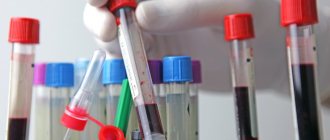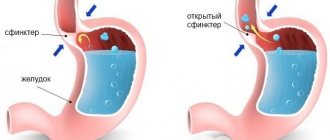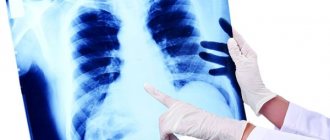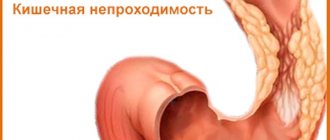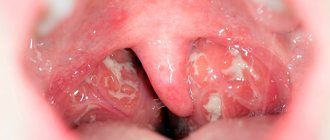What it is?
Pyelonephritis is an insidious disease characterized by the development of an inflammatory process of the renal pelvis and kidneys. This disease often develops in humans both as an independent disease and as a consequence of other diseases of the genitourinary system, due to which the flow of urine is disrupted in a person. Thus, very often the development of pyelonephritis occurs against the background of urolithiasis , prostate adenoma , and often the disease can develop against the background of ailments of an infectious nature.
Pyelonephritis in children often develops as a complication after illness with influenza or pneumonia . In pregnant women, this disease is a consequence of a noticeable hormonal imbalance in the body, and also develops due to impaired outflow of urine due to compression of the internal organs by the uterus. In addition, during pregnancy, exacerbation of chronic pyelonephritis often occurs.
Causes of the disease
Both acute and chronic pyelonephritis require a combination of two factors.
- Favorable conditions for the life of the microorganism (in conditions of local stagnation of urine).
- Penetration of pathogenic or opportunistic flora.
Pathological conditions accompanied by pyelonephritis:
- Urolithiasis disease.
- Nephroptosis.
- Congenital anomalies: ureteral strictures, duplication of the upper urinary tract, horseshoe kidney, accessory kidney, congenital pyelectosis, hydronephrosis and others.
- Kidney infarction.
- Tumors of the kidneys or upper urinary tract.
- Installation of urinary catheters for a long time.
The main pathogens identified during the disease: coccal flora, Proteus
), enterococci (
Enterococcus
).
Less commonly - Klebsiella ( Klebsiella
), enterobacteria (
Enterobacter
), cytobacteria (
Citrobacter
), E. coli (
Escherichia coli
), fungi (
Candida albicans
) and others.
The most common cause of the disease is an ascending infection from the underlying urinary tract. The hematogenous route of infection from foci distant from the kidneys cannot be excluded.
Predisposing factors include:
- Elderly or senile age.
- Genetic predisposition.
- Pregnancy.
Provoking factors are common to all types of pyelonephritis. Of great importance are:
- Impaired blood supply to the kidneys (shock, renal infarction).
- Immunosuppressive therapy (hormones, cytostatics, and others).
- Injuries in the kidney area, hypothermia.
- Endoscopic and urological interventions.
- Infectious process in other genitourinary organs (in women - vulvitis, in men - acute prostatitis).
Pathogenesis (what happens)
The development of pyelonephritis occurs when pathogenic microbes enter the kidney tissue. In patients with urethritis or cystitis , they pass from the bladder through the ureters. Microbes can also spread through the blood vessels from various sources of inflammation throughout the body.
Pyelonephritis is a disease that mostly affects women. With pyelonephritis, an inflammatory process of one or both kidneys manifests itself. As a rule, the disease is bacterial in nature. Microorganisms enter the human kidneys from the source of infection in the body through the bloodstream, or from the bladder and urethra through the ureters. In the latter case, kidney pyelonephritis manifests itself as a complication after cystitis or urethritis .
The prevalence of the disease among girls and women is explained, first of all, by the fact that the urethra in females is shorter than in males. Very often, symptoms of pyelonephritis appear in people who have problems with the functioning of the immune system, in diabetics . The disease often manifests itself in preschool children. Pyelonephritis often occurs in pregnant women, as well as in those who have already experienced childbirth or are beginning to be sexually active. In men, the factor that provokes the development of kidney pyelonephritis is often prostate adenoma . Due to problems with the outflow of urine in a person, a favorable environment for the development of bacteria is created in the body. Patients with kidney stones . Such formations often become a refuge for bacteria, which subsequently provoke inflammation.
Symptoms and signs
A woman should go to the hospital if symptoms such as fever, joint pain, muscle pain, headache, frequent urination, weakness, and discomfort when tapping and pressing on the lumbar region appear at the same time.
The pain often intensifies when walking, bending, or any movement of the body.
If several of the above symptoms appear, a woman should consult a doctor and not self-medicate.
The disease can have consequences for pregnant women and older women.
A correct diagnosis will allow you to cure the disease and exclude other diseases with similar symptoms (back pain occurs with osteochondrosis, muscle strain, radiculitis).
Fever and chills are characteristic of influenza and acute respiratory infections, and patients attribute general weakness to physical fatigue.
Types of pyelonephritis
Kidney pyelonephritis is usually divided into acute and chronic . There is also a primary and secondary form of the disease.
It is customary to distinguish between acute and chronic forms of pyelonephritis. In acute pyelonephritis, a person suffers from very severe chills, with intense sweating, an increase in body temperature up to forty degrees, pain in the lumbar region, nausea and vomiting. A urine test reveals a significant number of microbes and leukocytes .
Unlike acute pyelonephritis, the chronic form of the disease can proceed silently for years. At the same time, there are no obvious symptoms of pyelonephritis in humans, and signs of the disease can only be detected during a urine test. As the disease progresses, it can periodically become severely aggravated. Then the signs of the disease will be similar to the symptoms of the acute form of the disease. Treatment of chronic pyelonephritis must be adequate and timely, otherwise the excretory function of the kidneys may be significantly impaired.
Acute pyelonephritis
Acute pyelonephritis occurs in a patient due to the impact on his body of endogenous or exogenous microorganisms that penetrate the kidneys. In this case, a number of factors are decisive in the development of the disease: impaired urine passage due to stone obstruction and other reasons; disruption of urine outflow due to adenoma , prostate cancer , phimosis , etc. In addition, the occurrence of pyelonephritis determines the general condition of the human body. The body's resistance is negatively affected by an incorrect approach to nutrition, hypothermia, overwork , hypovitaminosis , frequent colds, and ailments of a number of body systems.
Depending on the stage of the disease and the presence of its complications, symptoms of pyelonephritis appear. Determination of the stages of the disease occurs after studying the morphological changes in the kidney.
At the initial stage of the disease, a person suffers from serous pyelonephritis , which can last from six to thirty-six hours. The disease then progresses to the following stages, which are characterized by the presence of purulent, destructive changes. As a rule, such changes have a clear sequence. apostematous pyelonephritis appears , then a kidney carbuncle , a kidney abscess , and the process of changes ends with purulent paranephritis .
At the stage of apostematous pyelonephritis, a person develops small multiple pustules on the surface of the kidney and in its cortex. If these pustules begin to merge during development, or a microbial embolus ends up in the final arterial vessel of the kidney, a person develops a renal carbuncle. This condition is characterized by the development of necrotic , ischemic , purulent-inflammatory processes.
Due to purulent melting of the parenchyma, a kidney abscess . An abscess that appears at the site of a renal carbuncle or apostemal fusion sometimes empties into the perinephric tissue. purulent paranephritis develops , and sometimes phlegmon of the retroperitoneal space also occurs.
Most often, purulent forms of pyelonephritis occur as a result of obstruction of the upper urinary tract.
With secondary acute pyelonephritis, local symptoms of the disease appear more clearly. At the same time, during the development of primary pyelonephritis , first of all, there are general signs of infection, but local symptoms may not appear at all at first. As a result, errors are possible during the diagnostic process. Symptoms of pyelonephritis generally become noticeable throughout the day. The patient complains of general weakness and malaise, which causes severe chills; body temperature can rise to 41 °C. Chills are characterized by severe headache, vomiting and nausea. There is noticeable muscle pain in the body, sometimes the patient experiences diarrhea and tachycardia .
Secondary acute pyelonephritis begins with the manifestation of renal colic. intense fever appear against the background of a sharp jump in body temperature, which can rise to 41 ° C. Next, the patient develops symptoms similar to those of secondary pyelonephritis. Once the temperature drops to normal or subnormal levels, the person begins to sweat profusely. He feels a certain improvement, the pain in the lower back becomes less intense. However, in this case there is an imaginary improvement, which the doctor cannot regard as a cure for the patient. Indeed, in the case of obstruction of the upper urinary tract, the attack of pain and chills will resume after a few hours.
If the patient develops a purulent form of pyelonephritis , then the symptoms of the disease become even more pronounced. In this case, lumbar pain goes from paroxysmal to constant, it is accompanied by chills and hectic fever . On the side where the lesion is observed, the muscles of the anterior abdominal wall and lumbar region are tense. The kidney is painful; palpation reveals its enlargement. Intoxication increases in the body , as a result of which the person’s condition becomes worse. The state of dehydration gradually worsens, so the person’s facial features become noticeably sharper, the condition becomes severe, and in some cases is accompanied by euphoria . However, the described symptoms of kidney pyelonephritis with purulent-destructive changes in the kidney are not always expressed. If a person is weakened or sick, then the clinical condition may manifest itself in a perverse way.
Chronic pyelonephritis
Chronic pyelonephritis is a fairly widespread disease. However, such a diagnosis is quite difficult to establish due to very few pronounced general clinical symptoms. In most cases, chronic pyelonephritis is a continuation of acute pyelonephritis. This disease occurs especially often in those patients who have impaired urine passage through the upper urinary tract. This phenomenon is provoked by stones in the ureters and kidneys, chronic urinary retention and other phenomena.
About a third of patients suffer from chronic pyelonephritis since childhood: the disease develops as a nonspecific sluggish inflammation of the parenchyma of the pyelocaliceal system and the kidney. In most cases, the disease is discovered many years after it occurs. Chronic pyelonephritis affects both one and two kidneys.
This disease is characterized by polymorphism and focal changes in the kidney tissue. Gradually, the following areas of the kidney tissue are involved in inflammation, therefore, the tissue gradually dies, and chronic renal failure .
The manifestation of chronic pyelonephritis is wavy: exacerbations of the disease periodically occur, which are replaced by remissions. Depending on the spread of inflammation in the kidneys and its activity, the clinical picture may vary. With an active inflammatory process, the symptoms resemble those of acute pyelonephritis. When the period of remission begins, the manifestations of pyelonephritis are expressed by nonspecific symptoms. So, a person may complain of a headache, lack of appetite, weakness, chills, attacks of nausea and periodic jumps in body temperature to low-grade fever. In some cases, a dull pain occurs in the lower back.
With subsequent progression of the disease, the person complains of attacks of arterial hypertension . Ten to fifteen years from the onset of the disease, the patient develops chronic renal failure .
Manifestation of the clinical picture
Symptoms of female pyelonephritis depend on the stage of the inflammatory process.
In acute pyelonephritis, lower back pain appears on one or both sides (acute in nature), the discomfort becomes stronger with pressure.
This includes an increase in body temperature, sweating, pain during urination, a decrease in the volume of urine with the same drinking regimen, the patient is thirsty, the urge to urinate becomes more frequent, headaches, attacks of nausea, and vomiting are present.
Also, the urine becomes cloudy and has a strong unpleasant odor, and sometimes streaks of blood are found in it.
Additional manifestations of the disease may occur in the acute stage, which is especially typical for young girls. Namely:
- rapid weight gain or loss with a normal diet;
- the appearance of a pale gray skin tone;
- excessive nervousness;
- swelling of the lumbar area;
- vaginal discharge;
- soreness or itching of the genitals.
Chronic pyelonephritis replaces acute with insufficient treatment and is characterized by:
- pain in the lumbar region (dull pain);
- feeling of discomfort on one side only;
- an increase in temperature (without signs of a cold) up to 38;
- heaviness in the back when walking, exertion;
- pain in the abdomen, head;
- frequent urge to urinate;
- increased blood pressure;
- constant feeling of cold (even in hot weather);
- weakness;
- swelling of the face and limbs;
- irritability.
During the period of remission, the disease usually subsides and does not manifest itself in any way. But it is possible that there is an increase in blood pressure and a state of weakness.
Diagnosis of pyelonephritis
In order to correctly diagnose kidney pyelonephritis in a patient, the doctor first of all examines the patient, paying special attention to the condition of his skin, noting whether there is moisture and pallor of the skin. The doctor also notes a dry, coated tongue and determines the presence of tachycardia and hypotension .
In the process of laboratory blood tests, leukocytosis and acceleration of ESR . If purulent forms of the disease occur, the patient experiences dysproteinemia , anemia , and high levels of urea and serum creatinine. Also, during the diagnostic process, a urine test is mandatory. It is important to conduct a bacteriological study and determine the sensitivity of microorganisms to antibacterial drugs. Laboratory tests necessarily include bacteriological urine culture.
Ultrasound diagnostics of the kidneys is often prescribed as an additional diagnostic method. If during this examination limited mobility of the kidney is observed, then this sign can be regarded as an additional criterion in the process of diagnosing acute pyelonephritis. Thanks to ultrasound, it is possible not only to diagnose the disease, but also to determine the reasons that led to its appearance - the presence of kidney stones, defects of the urinary system.
It is also possible to accurately determine the destructive forms of pyelonephritis in children and adults using CT or MRI.
If it is not possible to perform ultrasound diagnostics, it is possible to differentiate primary and secondary pyelonephritis based on the results of chromocystoscopy and excretory urography. In acute pyelonephritis, it is important to carry out a differential diagnosis with infectious diseases, acute ailments of the genitals and abdominal organs.
It is very difficult to diagnose chronic pyelonephritis in a person, because this form of the disease has a long latent period. In view of this, it is important to carefully study the results of laboratory tests, even if there are no visible external signs of the disease.
During ultrasound examination, the only sign that is characteristic of the chronic form of the disease is the presence of kidney shrinkage . In this condition, the kidney becomes smaller and its contour becomes uneven.
This condition is also characterized by a decrease in the secretory function of the kidney.
Classification
According to morphological characteristics and duration of course:
- Spicy. Lasting up to 2 weeks. A recurrent course is possible: repeated repetitions of acute attacks of the infectious process over time.
- Chronic. Long-term, long-term persistence of signs of the disease is possible.
On the involvement of the kidneys in the pathological process.
- One-sided defeat.
- Bilateral defeat. Occurs more often.
The requirement for characterizing the disease is an indication of the background pathology that contributes to the occurrence and maintenance of pyelonephritis.
Prevention of pyelonephritis
To prevent the occurrence of pyelonephritis, one should, first of all, pay special attention to the treatment of those diseases that cause this disease. These are kidney stones , prostate adenoma . It is also necessary to take a competent approach to the treatment of cystitis; the infection sometimes spreads to the kidneys from the inflamed bladder. To prevent pyelonephritis in pregnant women, they are advised to undergo regular urine tests throughout pregnancy .
Basic information
Pyelonephritis is considered a nonspecific infectious kidney disease, occurring in acute or chronic form.
The disease is classified into primary and secondary. To identify the initial cause of the pathological process, it is necessary to consult a specialist.
He will conduct a comprehensive diagnosis and prescribe appropriate treatment.
Pyelonephritis in pregnant women
Pyelonephritis in pregnant women often occurs as a result of intensive growth of the uterus, which, as it grows, presses on the ureters and impedes the outflow of urine. In addition, pyelonephritis in pregnant women occurs more often due to noticeable hormonal changes in the woman’s body. Due to intense hormonal changes, ureteral peristalsis may become noticeably more difficult.
In addition, daily activity is important for the proper functioning of the urinary system, which is not always typical for a woman carrying a child.
Most often, pyelonephritis occurs in those pregnant women who have previously had cystitis or pyelonephritis .
It is important to consider that pyelonephritis negatively affects the course of pregnancy and the fetus. This disease can cause anemia, late toxicosis and even termination of pregnancy. Therefore, when symptoms of pyelonephritis appear, it is important for a woman carrying a child to immediately seek medical help.
All women who have suffered pyelonephritis during pregnancy remain under the follow-up supervision of a doctor after childbirth.
Changes in urine
With the “standard” course of pyelonephritis, changes in the urine can be visually observed: it becomes dark, cloudy, and sometimes foamy. A microscopic examination will reveal many leukocytes and bacteria throughout the entire field of view.
However, very often with secondary obstructive pyelonephritis there are no such changes. This is due to the fact that an obstruction of the ureter (stone) does not allow urine from the affected kidney to enter the bladder; only urine from the healthy kidney will enter it. As a result, a “clean” urine test can confuse an inexperienced doctor. That is why, in case of pyelonephritis, it is always recommended to perform an ultrasound of the kidneys to accurately confirm the diagnosis.
Diet, nutrition for pyelonephritis
Diet for pyelonephritis
- Efficacy: therapeutic effect after 10 days
- Terms: 6-12 months
- Cost of products: 1300-1400 rubles per week
The diet involves careful selection of diet during the treatment of the disease, and after recovery. In the first days of illness, patients with acute pyelonephritis are advised to eat only berries, fruits, melons, and purees from some vegetables. Later, protein products can be gradually introduced, however, the diet for pyelonephritis assumes the energy value of food not higher than 1800-2000 kcal.
In the first days of illness, it is important to drink at least two liters of liquid - weak tea, herbal decoctions, fruit juices diluted with water. It is recommended to use fruit drinks made from lingonberries and cranberries.
A salt-free diet for pyelonephritis is not necessary, but salt intake should be limited to 6 g per day. It is important to eat foods high in vitamins.
At the same time, chronic pyelonephritis does not require a special diet . However, it is important to follow the principles of a healthy diet, drink plenty of fluids, and do not limit salt intake. To improve the health of the body, you can periodically arrange fasting days.
Treatment
The treatment plan is drawn up taking into account the cause of pyelonephritis, the patient’s age and the presence of concomitant diseases.
If the disease was caused by congenital or acquired anomalies in the structure of the urethra, as well as urolithiasis, then the patient is recommended to undergo surgery to plastically restore the deformed ureter, as well as to remove renal stones
Until the results of the antibiotic sensitivity test are obtained, the patient is prescribed broad-spectrum drugs. Nolitsin, Ceftriaxone, and also Ampicillin can be used as a so-called ambulance. In addition to antibacterial agents, conservative therapy for pyelonephritis includes the following groups of drugs:
- Non-steroidal anti-inflammatory drugs (Metamizole, Diclofenac);
- Analgesics;
- Immunostimulating drugs and uroseptics (Fitolysin).
In the acute period of the disease, the conservative treatment plan for left-sided pyelonephritis includes the following points:
- Maintaining bed rest. The total duration of bed rest is determined by the attending physician, based on the patient’s general condition.
- Compliance with dietary recommendations. The diet of a person diagnosed with pyelonephritis should include a variety of foods rich in vitamins, minerals and amino acids. In addition, it is recommended to follow a drinking regime that includes drinking at least 1.5 liters of clean water per day.
- Taking antibacterial drugs from the group of fluoroquinolones or cephalosporins. The average duration of antibiotic treatment for pyelonephritis is 14 days.
- Use of antifungal medications. Drugs from this group are prescribed to patients who are forced to use antibiotics for a long time, which can lead to the development of secondary fungal infection.
- Taking antihistamine antiallergic drugs (Tavegil, Diphenhydramine, Suprastin).
For personal safety reasons, it is not recommended to resort to self-treatment of pyelonephritis at home. Decoctions of medicinal herbs can be used as an auxiliary method of treating this disease. Before using certain herbal medicine options, it is recommended to discuss such actions with your doctor.
Complications of pyelonephritis
As complications of pyelonephritis, children and adults may develop acute pyelonephritis in the opposite kidney , sepsis , and bacteriotoxic shock .
The most serious complication of acute pyelonephritis is bacteriotoxic shock, as a result of which 45 to 55% of patients die. This disease manifests itself when antibacterial agents are prescribed when the outflow of urine is not restored.
In this condition, a person’s blood pressure red blood cells and platelets are destroyed . As a result, processes occur that lead to the development of multiple organ failure.
, nephrogenic arterial hypertension and chronic renal failure occur as complications .
Treatment of chronic pyelonephritis with folk remedies
Treatment of chronic pyelonephritis with herbs is carried out in the remission phase, which occurs after a course of antibacterial antibiotic therapy. Treatment of pyelonephritis with folk remedies is aimed at achieving stable remission and reducing the frequency of relapses of the disease. Anti-relapse treatment with herbal infusions and mixtures is carried out from 2 months to 2 years.
Recipes for the treatment of chronic pyelonephritis with folk remedies:
Recipe No. 1:
- first week of the month - cranberry juice, rosehip decoction instead of tea, vitamins;
- II, III weeks - horsetail (1 dessert spoon), licorice root (1 tbsp.), bearberry (1 dess. l.);
- IV – antibacterial drugs as prescribed by a doctor once a day at night.
Recipe No. 2:
- 1 month: birch leaf, hop cones, Crimean rose (flowers) - brew and drink like tea;
- II month: strawberry fruits, horsetail;
- III month: bearberry leaves, lingonberry leaves, rose hips;
- + the first 2 weeks of each month - echinacin (or immunal), aloe extract.
Mineral waters for chronic pyelonephritis:
Ingestion of mineral water such as "Naftusya" 150-200 ml 3-4 times a day 30 minutes before meals, course 24 days. Mineral waters “Luzhanskaya”, “Polyana Kupel”, “Dana” can be used in the same dosing regimen.
Surgical intervention
Surgery is prescribed for occlusion of the ureter by stones of various sizes. The extent of surgical intervention depends on the time of onset of the attack of pyelonephritis and the size of foreign objects in the genitourinary system.
If a small stone is detected, a catheter is placed into the ureter to bypass it. Such a decision is made when the probability of spontaneous passage of the stone in the near future is absolute. Catheterization is possible only in the first three days of the exacerbation phase of chronic pyelonephritis. Successful installation of a catheter facilitates rapid drainage of fluid into the pelvis. The condition of the kidney quickly stabilizes, which allows for an effective rehabilitation course.
If the patient is in serious condition due to an exacerbation of the pathology due to blockage of the ureter with a large stone, then a series of consecutive urgent operations is performed. First of all, percutaneous puncture nephrostomy is performed (drainage of the kidney using a low-traumatic method under ultrasound guidance). This allows you to get rid of internal pressure and reduce the level of intoxication. The patient is able to eat and drink normally.
After ensuring fluid drainage, the kidney is examined to determine its continued functioning. If the organ is healthy and has a positive prognosis for recovery, then surgery to remove the stone is prescribed. He (they) are removed with special grips inserted into the kidney through a small incision. A more progressive method is to crush the stone into sand using ultrasound. Small debris and sand leave the body naturally.
Sometimes the patient seeks medical help too late, when kidney carbuncles, purulent melting of its parenchyma and pyonephrosis are diagnosed. Such pathology is an indicator for kidney removal (nephrectomy) to avoid necrosis and general blood poisoning. The operation is performed under general anesthesia. After recovery, the patient is given a disability group.
Lifestyle with pathology and prevention of relapse
With a protracted course of chronic pyelonephritis, many patients are faced with the fact that they have to give up some habits and seriously reconsider most everyday aspects. It is important to accept the fact that a healthy lifestyle must be maintained continuously to maintain good results from medical treatment.
Women who are involved in military service, and also engage in heavy sports activities associated with constant hypothermia, should warn their immediate superiors about the presence of such an ailment. In case of stable and long-term remission, the question of continuing this or that type of activity is decided individually.
What patients with chronic pyelonephritis are strictly forbidden to do:
- Break your diet by abusing salty, fatty and fried foods. A weakened body accumulates water and excess fats, causing swelling and slowing down metabolic processes. This often leads to obesity or even cerebral edema. That is why doctors strongly recommend eating in accordance with established standards.
- Use alcohol and tobacco. Smoking and alcoholic drinks affect the blood vessels of the human body in a diametrically opposite way: ethanol relaxes the muscular framework of arteries and veins, while nicotine causes a persistent spasm. This leads to disruption of normal blood circulation in the body and can also cause kidney failure.
- Warm the kidneys during an exacerbation. Chronic pyelonephritis periodically manifests itself with obvious inflammatory symptoms, which patients unknowingly try to eliminate with a bath or hot bath. Remember that this will not only not help get rid of unpleasant sensations, but will also accelerate the disease. All thermal procedures are allowed to be carried out only during remission of the disease.
- Take medications without medical prescription. Many medications have a toxic effect and are also poorly excreted by weakened kidneys. An overdose can lead to the accumulation of the drug in the body, and a large concentration will cause the death of tissues and organs.
Preventive measures to prevent relapse and exacerbation:
- Do all mandatory vaccinations only if chronic pyelonephritis has been in clinical and laboratory remission for two years (there are no symptoms, exacerbations or changes in urine tests). Any vaccine contains weakened or inactivated pathogens of a particular infection, so you should not put yourself at risk again.
- Don't get too cold. With chronic pyelonephritis, any prolonged stay in the fresh air, as well as being in an air-conditioned room, is fraught with hidden danger. Don’t forget to wrap your lower back securely, wear long jackets, windbreakers and sweatshirts, and try to locate your workplace away from the source of cool air.
- Follow the rules of personal hygiene. Using special products for intimate areas will help reduce the risk of bacteria entering the genitourinary system. Do not forget to shower or bathe at least once a day, and also change your bed and underwear regularly. To destroy pathogenic microorganisms, you can boil the sheets or use special chemical antiseptics.
- Constantly monitor with specialists if you have an existing chronic or acute inflammatory disease. Remember that even untreated caries, a scratch or a purulent wound can become a source of bacteria spreading throughout the body.
- Get medical examinations and tests at least once a year. This will allow us to identify and identify the asymptomatic form of the disease, as well as stop its development and progression in the early stages.
Who to contact and how to diagnose
This disease is treated by a urologist or nephrologist.
To make a correct diagnosis, a specialist must familiarize himself with the medical history of the disease and conduct a correct diagnosis. Of the laboratory methods, general urine and blood tests are considered the most necessary. Instrumental tests include ultrasound of the kidneys, urography with contrast agent, and cystography.
Urine culture is then performed to identify the virus. If secondary pyelonephritis is suspected, it is necessary to establish the original cause of the disease.
A survey X-ray will make it possible to identify stones, determine the size of the kidney, the presence of voids or pathological narrowings.
Cystography can detect neoplasms and other changes in the structure of the bladder. An ultrasound is needed to determine the size of the kidneys and the structure of the walls. Using ultrasound, stones and sand are clearly visible.
Features of drug therapy in women
Pyelonephritis detected in a woman requires treatment to be prescribed immediately; only a doctor should select drugs and doses. The disease can spread quickly and progress.
Timely therapy is especially important during pregnancy. In this case, the disease may pose a threat to its progression. Careful selection of medications is also important: many of them are contraindicated, especially in the early stages. Their use can cause irreparable harm to the baby's health.
Groups of drugs for pyelonephritis and their characteristics
Therapy for the inflammatory process in the kidneys in women should be comprehensive. For this purpose, medications from several pharmacological groups are used for pyelonephritis. The most commonly used antibiotics are penicillin and cephalosporin drugs. They are prescribed in the form of tablets or intramuscular injections for a course of 1 to 2 weeks. The best way to select a medication from this group will be to analyze the sensitivity of the pathogen.
Antimicrobial synthetic agents that act bactericidal are included in the treatment. They can be divided into groups: fluoroquinolones, nitrofurans, hydroxyquinolines, sulfonamides. Herbal medicines are used for a long time to improve the condition of the kidneys. Be sure to use symptomatic remedies. These can be antispasmodics, antipyretics, non-steroidal anti-inflammatory, painkillers.
Review of the most used products
The most commonly prescribed tablets for pyelonephritis are penicillin in nature. A medicine called “Amoxiclav”, produced in 250, 500, and 875 mg doses, has proven itself well. The active substance is active against a large number of pathogenic pathogens and effectively destroys them. Take orally before meals three times a day, course from 5 to 14 days, the drug is contraindicated in case of individual intolerance to the components, liver diseases. The dosage is calculated by the attending physician specifically for each patient; it is not recommended to prescribe in the first trimester of pregnancy.
The amoxicillin series of antibiotics is represented by Flemoxin Solutab, which is resistant to the acidic environment of the stomach. This helps it maintain its unchanged appearance, provide a good therapeutic effect, the drug is effective against Proteus, streptococcus, take it two or three times a day in the amount prescribed by the doctor.
For the treatment of pyelonephritis, Nitroxoline is used, an antimicrobial, antiprotozoal drug, available in 50 mg tablets. The active substance suppresses pathogens such as tubercle bacilli and Trichomonas. Adults are usually prescribed 100 milligrams four times a day; in severe cases, the dose is doubled; it should be used with caution in patients with impaired renal function.
"Furadonin" is an inexpensive drug that is often the choice in the treatment of cystitis and pyelonephritis; it has an antimicrobial and antibacterial effect. The medication is taken after meals with plenty of water; it should be taken into account that the urine may turn yellow.
Furagin has a wide spectrum of action, successfully helping to fight kidney inflammation in most cases. Resistance to this drug develops very slowly, which is its positive quality. Your urine may turn orange when you use this medication.
A new third-generation antibiotic with a high rating, which has recently been included in the treatment of pyelonephritis, is Suprax. It is active against most pathogenic microorganisms in humans and has a small number of contraindications and side effects.
A plant-based drug called “Canephron” is used in the complex treatment of the urinary system. It helps with acute and chronic infections, prevents exacerbation, and is preventive in the formation of stones. The components contained in the drug have an antiseptic, antispasmodic effect, improve kidney function, and enhance the effect of antimicrobial medications.
produces the homeopathic drug “Solidago compositum S” for the treatment of inflammatory diseases in urology. It has a detoxifying, regenerating effect, and has a diuretic effect without side effects. Available in ampoules, quite expensive, the treatment regimen is prescribed by a doctor.
Traditionally, it is used in the form of injections, one ampoule 1 to 3 times a week for a month or a month and a half. A good therapeutic response of this drug is also observed in urolithiasis.
If pyelonephritis has become chronic, various complications have appeared, kidney function has been impaired, “Restrukta with injection C” is added to the treatment. It relieves inflammation, intoxication, and has an immunomodulatory effect. The medicine should not be prescribed during pregnancy. The course of treatment is the same as the previous medication. There is also a whole list of drugs produced by this drug that are auxiliary in the treatment of diseases of the urinary system.
Drug treatment of pregnant and lactating women
Pyelonephritis in women in an interesting position is very common. The danger of this condition is that, if left untreated, spontaneous abortion may occur in the second trimester. Intrauterine transmission of infection to a child is also possible.
Self-medication in this case is unacceptable; the expectant mother is prescribed antibiotics. Moreover, their use will cause much less harm than an untreated infection.
Attention! Prescriptions should be made exclusively by a doctor: there are many drugs that can only be used from the second or even third trimester. Their use in the early stages can cause serious pathologies in the fetus. Medicines for pyelonephritis in pregnant women can be based on ampicillin, methicillin, oxacillin.
Medicines for older women
When treating pyelonephritis in elderly women, it is important to prescribe medications after examining the condition of all organs and systems. All existing diseases must be taken into account. It is necessary to carry out bacteriological culture of urine to determine the sensitivity of the pathogen to antibiotics.
Most often, broad-spectrum agents are prescribed: cefuroxime, nolicin, amoxicillin. For elderly patients, aminoglycosides and lolimixins are not used. Doses should be 25-50% lower than generally accepted. After acute symptoms are relieved, doctors recommend maintenance therapy for geriatric patients for more than six months. Every month for at least ten days a course of some nitrofuran (for example, Furazolidone) is prescribed.
Next, herbal infusions that have diuretic and antiseptic properties are used at home. Using a decoction of Chinese rose helps to quickly cope with the disease and serves as a good folk prophylactic.
Diet
Following a special diet and adjusting your diet will help speed up the recovery process and normalize your well-being during acute pyelonephritis. Patients are advised to exclude from their usual diet:
- fat meat;
- smoked meats, fried foods, marinades and pickles;
- mushrooms, legumes, raw vegetables with coarse fiber;
- carbonated drinks, strong coffee and alcohol.
It is advisable to prepare dishes without adding various spices and seasonings. It is necessary to minimize the consumption of baked goods, chocolate, and confectionery products. Food should be consumed in small portions 5-6 times a day, that is, it is necessary to adhere to fractional meals. If you have pyelonephritis, you should try to drink a lot of fluids. This can be plain water, compotes, juices, or rosehip decoction.
In the acute stage, it is better to cook food without salt or add a little salt to already prepared dishes. For chronic pyelonephritis, it is recommended to reduce salt intake. You need to follow such a diet constantly so as not to provoke an exacerbation of the disease. Food needs to be steamed, baked, stewed. It is better to avoid fried foods completely.
In the summer, it is advisable to arrange fasting days for yourself, during which you need to eat only watermelons. They have pronounced diuretic properties, help get rid of congestion, accelerate the elimination of microbes, and normalize kidney function.
For kidney disease, it is recommended to consume natural juices. Blueberry and birch help restore electrolyte balance and also improve immunity. They are also used as a prophylactic against bacterial infections. During antibiotic treatment, it is recommended to consume cranberry juice.
Fresh carrots are famous for their good anti-inflammatory and bactericidal properties, and pumpkin juice guarantees a diuretic and tonic effect.
Causes
This disease is considered an inflammation that occurs with various pathologies inside the urinary ducts and kidneys. The disease is caused by various circumstances and is divided into obstructive and non-obstructive.
The first is formed due to functional and organic failures of urodynamics. The non-obstructive form occurs due to immunodeficiency, metabolic disorders, hemodynamics, disruptions in the endocrine system and other factors.
The disease often appears due to the following circumstances:
- untimely detection of factors that provoked a failure in the outflow of urine;
- inappropriate treatment of acute pyelonephritis or undertreatment;
- persistent strains of microorganisms that remain inside the kidney tissue and are detected during the deterioration of the immune system, provoking an exacerbation of the pathology;
- related diseases in the chronic stage (digestive tract disorders, diabetes mellitus).
With timely diagnosis, it is possible to eliminate the disease as soon as possible.
Etiology in a child
This form of the disease is most often observed in children, which is associated with inappropriate treatment of acute pyelonephritis. With various infectious pathologies, an exacerbation of the inflammatory process inside the kidneys occurs.
In childhood, pathology is detected more often than in adults. In many situations, such an inflammatory process is considered the result of improper treatment of the acute form of the disease. With symptoms of the underlying disease, the manifestations of chronic pyelonephritis are often invisible.
In children, there are 3 most dangerous stages, when the body is susceptible to infection:
- from birth to 3 years;
- from 5 to 8 years;
- during puberty.
At these stages, it is necessary to carefully monitor your health, eliminating the influence of factors that cause pathology. Many cases of the disease in children are determined by their physiological structure.
Preventive measures
By following a number of simple rules, you can prevent the development of pyelonephritis. If the disease is chronic, prevention will help avoid exacerbations and progression of the process. To do this, it is important to do the following:
- promptly sanitize existing foci of infection;
- avoid hypothermia;
- drink enough fluids;
- empty your bladder on time;
- treats colds under medical supervision;
- eat properly and nutritiously;
- get rid of bad habits;
- maintain personal hygiene;
- take courses of vitamins;
- avoid stagnation in the pelvis.
Moderate physical activity, hardening, and sports will help normalize metabolic processes and promote better urine flow, which is an important aspect in the prevention of pyelonephritis and other inflammatory diseases of the genitourinary system.
Features and variants of inflammation in the kidneys
In most cases, any inflammatory process in the renal parenchyma is caused by the entry of aggressive microbes into the tissue. The main cause of pyelonephritis is infection, but the influence of internal and external risk factors plays an important role in the active reproduction of microorganisms. There are 2 main types of pyelonephritis in women:
- Spicy.
- Chronic.
In the first case, all manifestations are pronounced, in the second, the symptoms are scanty and unnoticeable. It is important in each specific situation to identify the microbes that cause pyelonephritis and to eliminate risk factors without fail in order to prevent exacerbation of the disease.
Acute course of the disease
What is acute pyelonephritis
Signs
The symptoms of acute pyelonephritis are more pronounced and in all cases require hospitalization of the patient and inpatient treatment. Acute pyelonephritis is accompanied by:
- high temperature over 38 degrees;
- weakness, increased fatigue;
- nausea;
- chills;
- more pronounced pain in the lumbar region than in the chronic course of the disease.
In this case, symptoms, as well as diagnostic parameters, may differ if acute pyelonephritis is serous or purulent. Purulent pyelonephritis has a more pronounced clinical picture, as well as more significant abnormalities in ultrasound and tests.
Symptoms and signs of pyelonephritis
Diagnostics
To make a diagnosis of “acute pyelonephritis” it is necessary:
- physical examination: percussion is usually painful;
- a general blood test confirming the inflammatory process with a high level of leukocytes and ESR, a decrease in hemoglobin;
- high levels of C-reactive protein;
- leukocyturia;
- Ultrasound.
It should be remembered that pain in the abdominal space, absence or preservation of kidney mobility can be used to differentiate acute pyelonephritis.
Methods for diagnosing pyelonephritis
Therapy methods
Treatment of all types of secondary pyelonephritis is carried out in the nephrology department. This makes it possible to monitor the dynamics of the process and make timely adjustments to the prescribed treatment. The specialist recommends bed rest and dietary nutrition.
When an improvement in well-being is observed, the diet is expanded, but returning to the previous diet is possible only when final remission is achieved.
Medication methods
Conservative treatment is carried out in combination with a reduction in unpleasant symptoms and includes:
- Antimicrobial treatment. Oral cephalosporins are often used. The duration of therapy is at least 1-2 weeks. According to indications, antibacterial agents of other subgroups are used. Courses of prophylaxis and treatment with antibiotics are not planned in the process of eliminating the provoking factor of the pathology.
- Immunocorrective therapy. Used parenterally, in small courses. To improve microcirculation of kidney tissue - Trental, Heparin.
- Symptomatic treatment. Anesthetics and antispasmodics are prescribed parenterally if the kidneys are functioning properly. In certain situations, eliminating pain and local spasm of the smooth muscles of the urinary ducts helps resolve the obstruction.
Treatment must be agreed with the attending physician.
ethnoscience
To cure the disease, it is possible to use folk therapy. They are allowed to be used in the presence of chronic processes that are difficult to correct or impossible to correct the initial disease. Folk remedies make it possible to reduce stress and duration of use of antibacterial drugs.
Herbal infusions (canephron, urofluk, kidney tea) and certain medicinal plants have a positive effect.
Treatment of children
Complex treatment of such a pathological process involves the implementation of drug therapy, compliance with the child's plentiful drinking regime and nutrition.
During an exacerbation, bed rest and vegetable and protein nutrition are prescribed. The basis of treatment for the disease in childhood will be treatment with antibiotics, which use cephalosporins, lactams, and aminoglycosides. At the end of the treatment course, uroantiseptics are prescribed.
The duration of therapy for secondary pyelonephritis in childhood is 1-3 months.
Diet food
During an exacerbation, the patient must follow a gentle diet. Initially, salt, protein and animal fats are excluded from the menu. Fermented milk products, for example, cottage cheese, will be useful. You are allowed to eat up to 20 g of butter per day.
- spices;
- caffeinated drinks;
- alcohol;
- rich meat broths;
- canned products.
- fruit and berry juices, compote, fruit drink;
- melons;
- vegetables;
- fruits.
Your doctor will help you choose the optimal diet.
